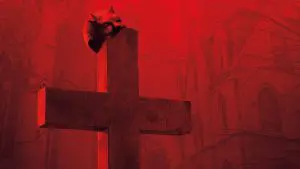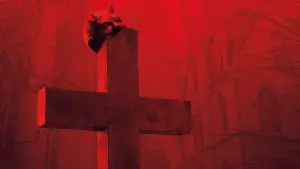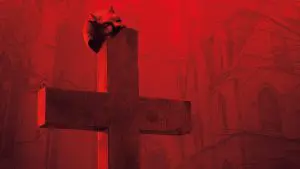[Note: This was written before the release of Jessica Jones, Daredevil Season 2, Luke Cage and Iron Fist. Just keep that in mind. Most of the easter eggs and suchlike still apply, but take some of the predictions with a pinch of salt.]
Apparently if you take a couple of atoms, send them barrelling around some tunnels at just under the speed of light and smash them together really hard, you might create a black hole. The last I heard there was a machine in Switzerland – Switzerland! – which does exactly that. I immediately thought of it when I got done binge-watching the first season of Daredevil, which is popular media’s own kind of black hole: it sprang into existence after the high-speed collision of Marvel and Netflix, it has an uncompromising gravitational pull, and when you’re trapped inside it you realize that it doesn’t really explain anything about the universe other than the fact there’s an awful lot more of it out there than we can really comprehend.
That would be the Marvel Cinematic Universe, obviously, a dense network of interconnected characters and stories which now encompasses ten movies, three TV shows and five short films. Daredevil is the latest addition; another original series exclusive to Netflix, and the first of a planned four which will factor into the MCU (not to mention a crossover mini-series, The Defenders, which will tie them all together). It is thirteen episodes of truly fascinating television, made doubly so by the fact it’s also genuinely excellent television; not the nebulous shared-universe kind of excellence which thrives on the thrill of continuity, but just genuinely superb craftsmanship across the board.
So here I am thinking about black holes and Switzerland and wondering how this actually happened. Sure, the MCU is well-known for quality, but it’s also reasonably well-known for being, if not necessarily overrated, then at the very least under-criticised – particularly when it comes to TV. Agents of S.H.I.E.L.D. might have found its own identity now, at the tail end of its second season, but the most noteworthy thing about it is still what it represents for how television and film can be interwoven. Likewise Agent Carter, which was always good and occasionally even great, is nevertheless a far cry from the kind of cultural phenomenon that, say, The Avengers was (and remains). Even though both of these shows occupy vastly different pockets of the established Universe, they’re both unmistakably part of the same canon: family-friendly sci-fi/spy yarns with a lot of characters and plot points we recognise, and a general focus on large-scale, generally unambiguous good vs. evil moral conflicts.
Daredevil, conversely, is nothing like that; often to such a degree that it feels less like a Marvel property than it does a dark, gritty police procedural. It’s distinctly adult and incredibly violent. If it wasn’t for a handful of visual clues and the occasional dialogue reference you’d be forgiven for thinking that Daredevil has no association with the shared-universe continuity whatsoever. And that’s probably the show’s greatest strength. A graphic, grounded story like the one Daredevil wants to tell doesn’t work if you’re being constantly reminded of the fact that, somewhere in space, a baby tree is dancing to the Jackson 5.
That isn’t to say Daredevil is entirely self-contained; on the contrary, it’s full of characters and sub-plots (Claire Temple, Madame Gao, The Hand and Black Sky, to name a handful) which exist almost entirely to plant seeds for the other forthcoming Netflix series’. It also treats things we’ve seen and/or heard about in other corners of Marvel’s Universe as a kind of worldbuilding secret weapon: Hell’s Kitchen as a setting has been moulded by inter-dimensional alien invasion, but Daredevil is less interested in exploring that specifically than it is in how a normal city and it’s people adapt to and move away from it.
We’ll talk more about this later, but for now let me just clarify exactly what this post consists of. Because of Netflix’s season-dump method of content distribution, it doesn’t make much sense to tackle each episode individually – most people will probably have watched the whole thing by now. So consider this a broad analysis of the entire season, along with some comics-clarification where necessary, and a little bit of speculation about what certain plot points might mean and where things may ultimately end up going from here. I know not everybody will be interested in all that stuff at once (or at all), so I’ve done my best to segregate things so that it’s pretty clear when I’m talking about the TV series specifically and the Daredevil/Marvel mythos generally.
Note: This isn’t intended to be a comprehensive list of Daredevil Easter eggs. You can find that elsewhere. Anything I mention in regards to the comics will be in the context of this show specifically or the broader MCU (usually).
Needless to say, ENORMOUS SPOILERS from this point on.
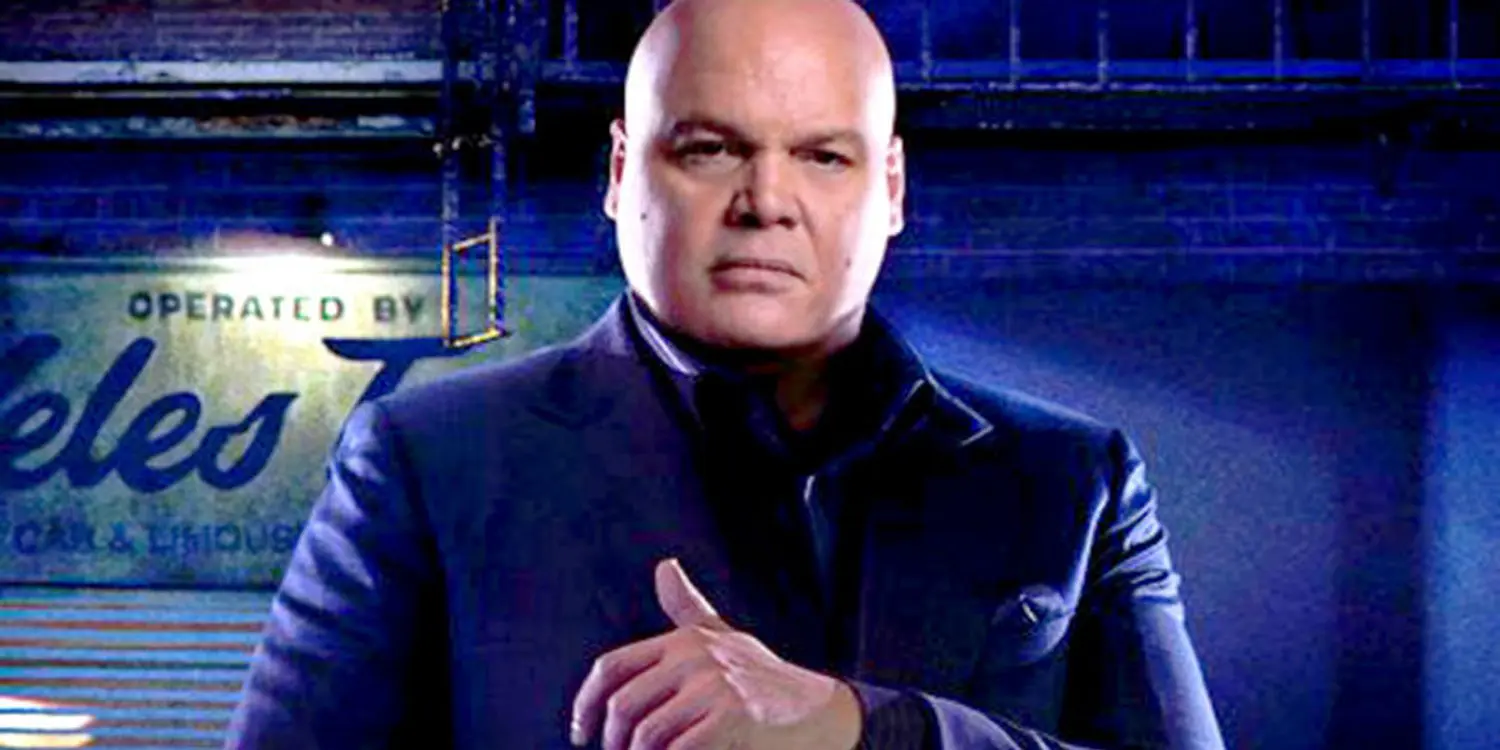
So, let’s assume that you’re unfamiliar with the story of Matt Murdock (Charlie Cox), blind defence attorney by day and costumed crimefighter by night. Series creator Drew Goddard and showrunner Steven DeKnight make that assumption too, as Daredevil’s first season is really a multi-layered origin story for Murdock, his mates and his enemies, drawing particularly noteworthy influence from Frank Miller’s The Man Without Fear.
The character of Daredevil has always been closely compared to DC’s Batman, and for good reason: they’re both uncharacteristically “mortal” in the context of their respective mythologies; both were spurred into vigilantism by the murder of a parent(s); both have an almost creepy devotion to the cities they grew up in; and both have a strong aversion to murder, despite being more than willing to break every other law imaginable. (And Frank Miller also wrote what is considered the comprehensive Batman origin story, too).
It shouldn’t come as a surprise, then, that tonally Daredevil is much more akin to Miller’s work, and Christopher Nolan’s Batman trilogy, than it is with any other Marvel property. The first two episodes, “Into the Ring” and “Cut Man”, bring that across while laying the foundations of Murdock’s backstory. In his youth he is blinded by some unspecified hazardous material, which in turn heightens his remaining senses to superhuman proportions. He remains in Hell’s Kitchen with his father, Jack (John Patrick Hayden), a boxer who is eventually murdered by gangsters after refusing to throw a fight*.
*The fight Jack Murdock was supposed to throw was against Carl “Crusher” Creel, who has already shown up in the MCU as The Absorbing Man in Agents of S.H.I.E.L.D.
Netflix doesn’t release its original shows one episode at a time, but instead throws up the entire season for fans to binge on at their own pace. It’s a refreshingly pressure-free form of serialized storytelling, one which affords a lot of liberating space for characters and other elements of the world to develop organically over time. Aspects can be introduced and then left alone for a while without having to worry about viewers changing channel or not tuning in again the following week, and various pieces of the Daredevil mosaic can be slotted into place long after the introductory episodes. So not only do we get the introduction of Matt himself, but also the origins of Nelson and Murdock, the law practice he starts up with his best friend, Foggy (Elden Henson); and the introduction of Karen Page (Deborah Ann Woll), whom the two successfully defend as their first client and then agree to take on as their secretary.
The generous dimensions of the format make room for subtler character development than you might otherwise be used to; all the familiar tropes with which we’re usually bombarded in one or two scenes are here delicately planted, with their fruits ready to be enjoyed further down the line. Matt’s fighting prowess, for example, isn’t even touched on until Episode 7, when we meet his glassy-eyed, misanthropic master-assassin tutor, the titular Stick* (Scott Glenn), who plucked him from an orphanage** following his father’s death and taught him both how to fight and how to properly harness his heightened super-senses. Likewise, in Episode 10, “Nelson v. Murdock”, we’re treated to a flashback sequence showing how Matt and Foggy met and became friends in college*** – something which, after nine prior episodes showing how close their relationship is, we didn’t strictly need. This kind of attention to characterization and backstory is appreciated, and it’s easy to overlook how delicate of a narrative balancing act it is to consistently introduce new story elements while peeling back the layers of the old ones. It’s amazing how rarely Daredevil ever feels rushed or cluttered.
*The show does a decent enough job of explaining who Stick is to Matt – basically an angry old dude who turned up out of nowhere to school him in the art of badassery. What it doesn’t explain is who Stick is talking to at the end of the episode. That’s almost certainly Stone, who in the comics is Stick’s second-in-command of a group called The Chaste (though here it looks like the roles have been reversed). The Chaste are the sworn enemies of Marvel’s go-to ninja clan, The Hand. Yeah… comics are weird.
**The orphanage is St. Agnes, the same place Skye from Agents of S.H.I.E.L.D. spent some time as a kid.
***During one of the college flashbacks, Foggy mentions a hot Greek girl. That’s almost certainly a reference to Elektra Natchios, another of Stick’s pupils who somehow makes even more questionable life choices than Matt does. She’s probably going to be a major player in subsequent seasons.
One of the most compelling aspects of Daredevil’s character is that he (perhaps naively) truly believes in the law and conventional justice, even though he isn’t above nipping out into the night with a couple of billy clubs and torturing thugs for information. You generally get the impression, though, that he falls back on his nocturnal escapades only when he can see the system failing him, which, along with his stringent Catholicism, creates an internal struggle that he’s still grappling with even by the very end of the season. This creates a kind of dual narrative, with the daylight hours being largely devoted to sniffing around suspiciously-allocated company pension funds and building credible legal cases, while the night-time scenes are typically insanely well-choreographed fight sequences as Daredevil bludgeons his way around New York’s criminal underworld while invariably getting the shit kicked out of him for our viewing pleasure.
The fight scene that ends “Cut Man” is the best I’ve seen all year, both in a technical (it was apparently filmed in a single continuous shot) and choreographic sense. Bad guys attack all at once, rather than one at a time. When they get knocked down, they stagger back to their feet for another round. Everyone, especially Murdock, is hurt and exhausted, and Cox’s physical performance as the knackered vigilante really is something to behold. It’s a clear homage to a similar scene in Oldboy, too, which always earns points in my book. They’re both below.
Murdock’s tendency to take a beating ties back into what I said about Daredevil’s Batman-style uncharacteristic mortality; his vulnerability makes him a more relatable “superhero” than anyone else on Marvel’s roster, and that Daredevil’s Netflix exclusivity has freed it from a lot of the considerations which often hobble network television means it can visit a kind of brutality upon its hero (and his adversaries) that it wouldn’t have been able to even consider in any other format.
This also leads to the introduction of Claire Temple* (Rosario Dawson), a nurse who fishes the half-dead Murdock out of a dumpster and treats his wounds, eventually becoming his personal on-call physician and quasi love interest for a couple of episodes. Dawson is superb in the role, and while she doesn’t have much to do here her continued presence in the MCU is one of the biggest positive takeaways from Daredevil as a whole (I think I fell in love with her a little bit). She’s one of the standouts among a truly exceptional supporting cast.
*Claire is a real Marvel character, appearing primarily as the girlfriend of Luke Cage. In this case though, it seems she has also been combined with the character of Night Nurse A.K.A Linda Carter, who made patching up superheroes and vigilantes a full-time job and (tellingly) played a role in Civil War.
Joining her is Henson’s Foggy Nelson, a character I utterly despised for the first few episodes before eventually coming to regard as the moral centre of the whole show. Although initially coming across as a one-note comic relief sidekick, he’s gradually revealed to be significantly more complex and nuanced than that; from his resolve over the tenement housing case, to his weird relationship with Marci (Amy Rutberg), to his rather tragic attraction to Karen, to the genuinely emotional entirety of episode 10, he’s truly a three-dimensional character. And it makes complete sense that he, in that tenth episode, gets to ask the type of questions we’ve been wanting answers to since the start.
There are plenty of others. Woll turns in an excellent performance as Karen Page, even though the character herself is written in a wildly inconsistent, often irritating way. I like the fact that she subverted the traditional damsel-in-distress narrative* during her confrontation with Wesley (Toby Leonard Moore, another superb casting choice), but she’s far too frequently dumb, generally annoying or actively unlikeable – particularly in how she knowingly leads on Foggy. Her subplot with investigative reporter Ben Urich** (Vondie Curtis-Hall) is by far the least entertaining aspect of the show, and I think the writers vastly overestimated how interesting the paper trails actually were (although Curtis-Hall kept it all watchable, despite his somewhat on-the-nose backstory).
*There are multiple hints to Karen Page’s past throughout the season. Her line in this scene, specifically, “You think this is the first time I’ve ever pointed a gun at someone”, is the biggest of them. She’s had a lot of shit happen to her throughout her long tenure as Matt’s squeeze in the comics (including being a heroin addict and a porn star) but they happened after she had been secretary at Nelson and Murdock and subsequently left. In this case it looks like they might have flipped that around.
**Ben Urich is a significant fixture in the Daredevil comics. He’s supposed to write for the Daily Bugle, but licensing issues (the Bugle is part of Sony’s Spider-Man universe) meant that he had to have a job at the New York Bulletin instead (it’s also a Marvel paper).
Most noteworthy of all is Vincent D’Onofrio’s Wilson Fisk, A.K.A. Kingpin, who we get a brief glimpse of in Episode 3, “Rabbit in a Snowstorm”, and a proper, breathtakingly gruesome introduction to in Episode 4, “In the Blood”. Fisk is the MCU’s most fully-realized and relatable villain to date; he isn’t a mystical warrior, a genetically-engineered super-soldier or a supreme cosmic overlord – he’s a giant, bald baby who is forced to overcompensate in everything he does to disguise his childlike hypersensitivity. D’Onofrio’s performance is revelatory, and it’s bolstered by a refreshingly humane and complex take on the character and his relationship with Vanessa* (Ayelet Zurer). When we first meet him it is at his most vulnerable: openly lonely, and fumbling his way through social interactions as though he’s literally learning how to communicate with people as the season progresses. That’s an incredibly brave way to introduce an antagonist, and by the time he’s violently beheading someone with a car door in the very same episode, we’ve already seen the two most extreme sides of his personality – both of which are equally compelling.
*When, over dinner, Vanessa tells Fisk about a man who seduced her wearing a white suit and an ascot, she’s making a rather obvious reference to Kingpin’s hilariously-bad fashion sense.
It’s impossible not to draw parallels between Fisk and Murdock. They’ve both had a similar, patriarchal upbringing, the difference being that the former’s was inherently abusive, as we learn in the excellent Episode 8, “Shadows in the Glass”*. They’re both developing personal relationships, Murdock with Claire Temple and Fisk with Vanessa. They both have the same goal (that of making Hell’s Kitchen a “better place”) though wildly different methods of attaining it, but they’re united by a shared frustration in being seemingly unable to do so without making compromises. These are two characters who, for the majority of the season, exist completely separately from one another, but they’re nonetheless inextricably linked and fated to collide in one way or another: courtroom or darkened alleyway.
*A lot of people are wondering about the missing years between Kingpin being sent to “the farm” and then returning to Hell’s Kitchen as a crime lord. The link is the guy who his father borrowed money from: Don Rigoletto. In the comics, Kingpin started out as his bodyguard/enforcer, before eventually betraying him and taking over his operation.
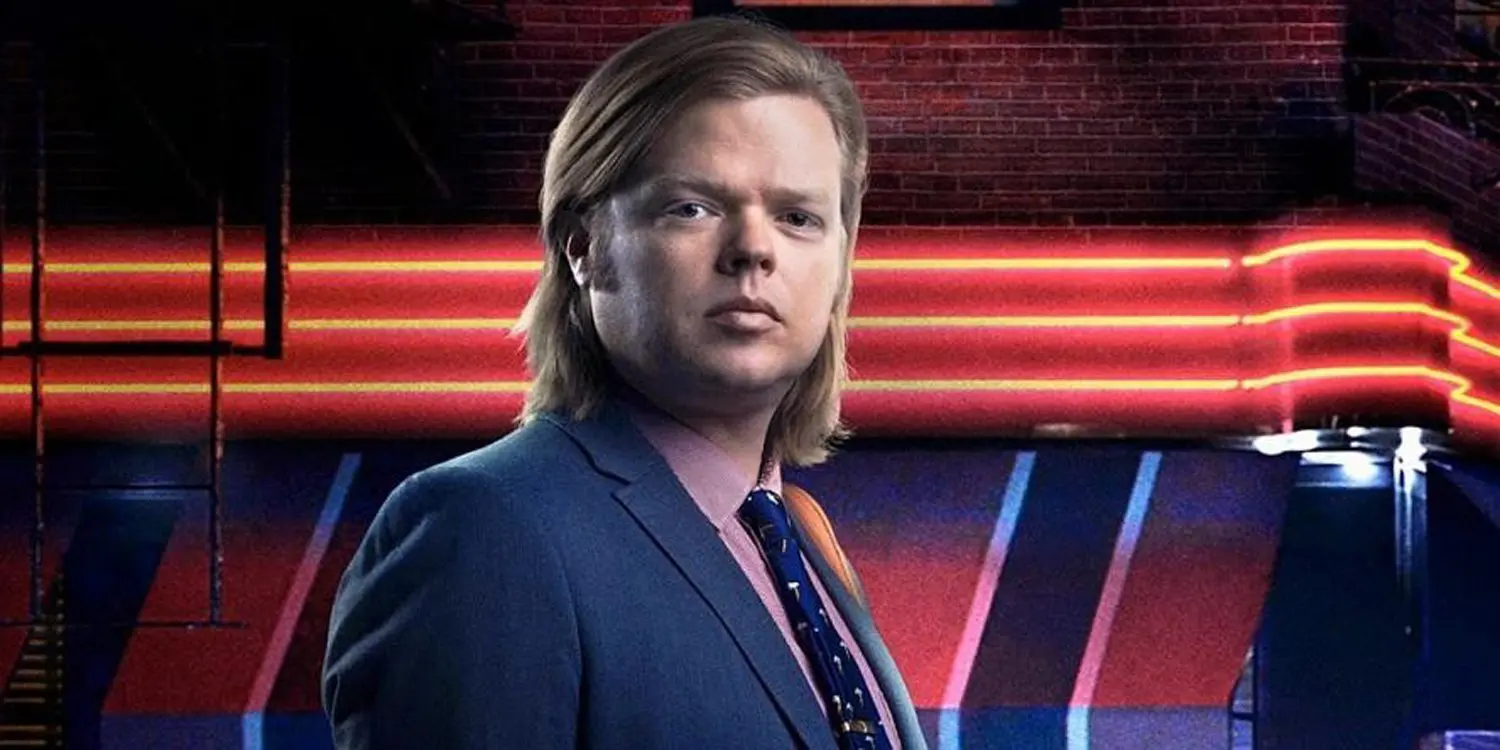
Further similarities between Fisk and Murdock emerge steadily through the show’s deft handling of religious themes. Matt often confides in Father Lantom* (Peter McRobbie), first confessing his sins at the outset of the season, looking for a reason not to abandon his principles and his faith. This is the first in a number of key conversations which all lead to a final meeting in Episode 11, “Path of the Righteous”, during which Lantom’s explanation of Lucifer’s past as an angel allows Matt to reconcile his religion and emotions. Meanwhile, Fisk spends the majority of the season attempting to justify to himself (and, frequently, Vanessa) why he does the things he does; insistent that he is not a violent or cruel man by nature, but by necessity. His personal path to enlightenment reaches a termination point in Episode 13, “Daredevil”, when he tells the Bible story of the Samaritan and realizes that he is not the hero, but is in fact “the ill intent”.
*Father Lantom is a man of faith in the comics, too. He’s not a major player (particularly not in Daredevil), but it’s nice they included him.
At one point, Urich describes the major players in Hell’s Kitchen not as villains or heroes, but as “people with different agendas”, and this is a viewpoint which seems to be mirrored by DeKnight and Goddard, who devote a lot of screentime to seemingly inconsequential characters, whichever side of the law they happen to fall on. The Ranskahov brothers, Anatoly and Vladimir, are given a revealing prologue at the start of “In the Blood”, whereas in a Hollywood tentpole they’d have been granted perhaps a couple of lines. Similarly, Leland Owlsley* (Bob Gunton), Fisk’s crooked financial advisor, has his own subplot with Madame Gao** (Wai Ching Ho), the mystifying matriarch of the Triad’s heroin operation (and one of the strongest links to Daredevil’s relationship with forthcoming Netlix shows***). Nobu**** (Peter Shinkoda) has a fun character moment when he is asked to “find someone from his organization” to eliminate Daredevil and, arrogantly, ends up taking the job personally. Even Urich himself gets his own, quite heart-breaking subplot, which is necessary for our emotional investment in the character.
*Owlsley is also the supervillain known as The Owl, but it’s unlikely we’ll see that incarnation of him in the show. It certainly looks as though he’s dead, but frequent references were made to his son, who could easily take up the mantle in subsequent seasons.
**At one point Madame Gao mentions she is from a place “significantly farther away” than China – it’s probably K’un-Lun, the mystical/alien city in Tibet which is the source of Iron Fist’s power (he’s getting his own show eventually).
***The symbol on Gao’s heroin packets is that of Steel Serpent, one of the more prominent Iron Fist enemies.
****Nobu could be Kagenobu Yoshioka, but either way he’s a part of The Hand. When he turns up to fight Daredevil he does so in their traditional red ninja outfit, so there’s that link cemented (this also ties in the presence of Stick and The Chaste).
For a Universe with such strong ties to cosmic mysticism, it’s nice to see characters on all sides in Daredevil being defined by their human capacities rather than their more outlandish alter-egos (comics are weird; pretty much everyone has had a superhero/villain persona at some point). Even when a literal ninja turns up (not to mention that creepy kid in the shipping container*) everything is played completely straight, which is at first jarring, tonally, but ultimately comes to work in the show’s favour. Daredevil unmistakably has ties to the broader MCU, but it’s a deeply personal story; the heroes don’t save the world, they save the neighbourhood, and it’s a neighbourhood which has been ravaged and corrupted by the spectacles we had so much fun watching in The Avengers and other MCU movies. When the Norse God of Pranks isn’t around, it’s down to normal people to sweep up the mess he left in his wake – that’s the murky corner of the canon Daredevil occupies, and it’s one which could have easily been forgotten about or glossed over.
*I have absolutely no idea what Black Sky is.
That Netflix allows these stories to be told with such grit and grime is indicative of Marvel breaking yet another creative ceiling. Daredevil isn’t just a fun side-show in a broader mythology; it heralds a new dawn for comic book TV adaptations, and represents a wealth of potential for both the next three Marvel/Netflix series and the streaming service’s original programming in general. It is, truly, a tremendous achievement; an entertaining and absorbing watch, boasting thematic depth, strong cinematography and dialogue, and fight scenes of the highest technical calibre. The groundwork has been laid here for an incredible couple years of television.


